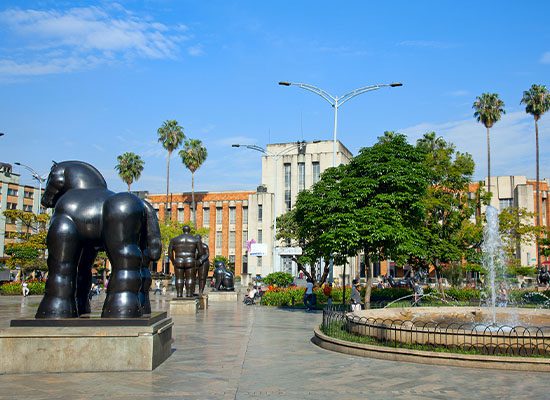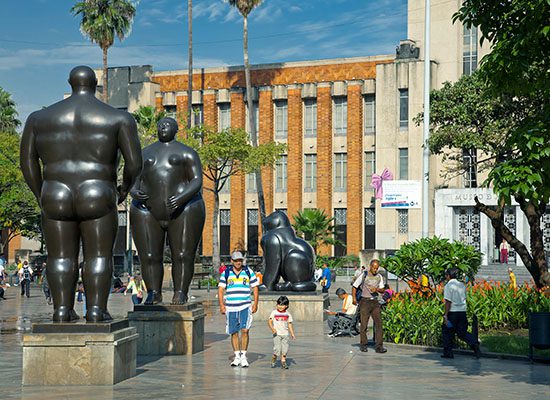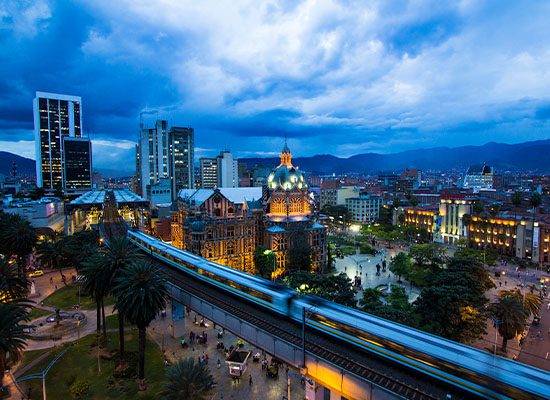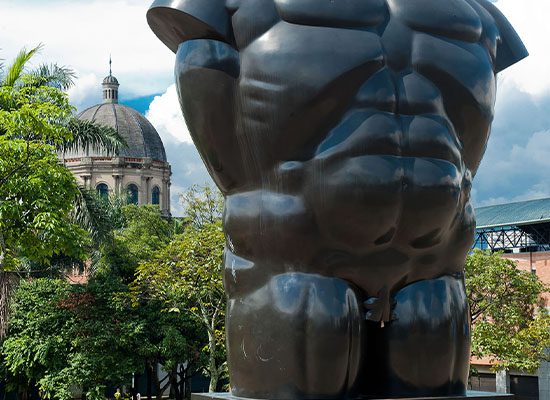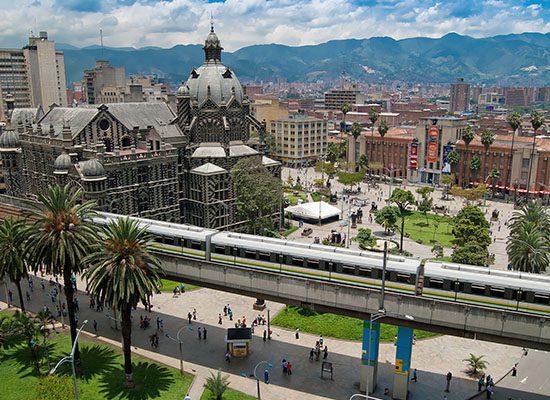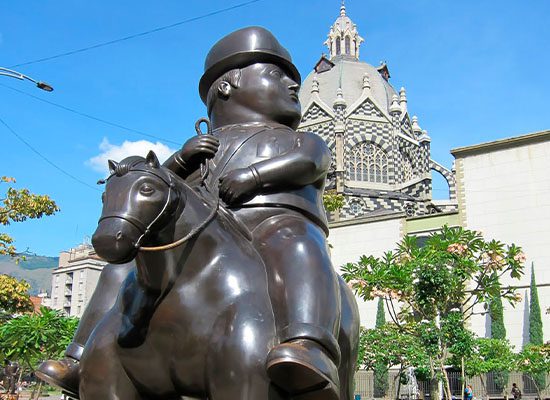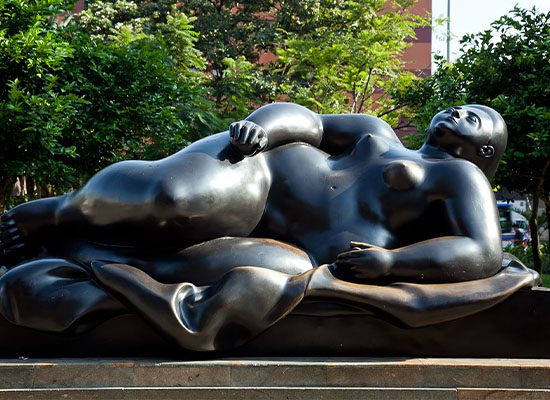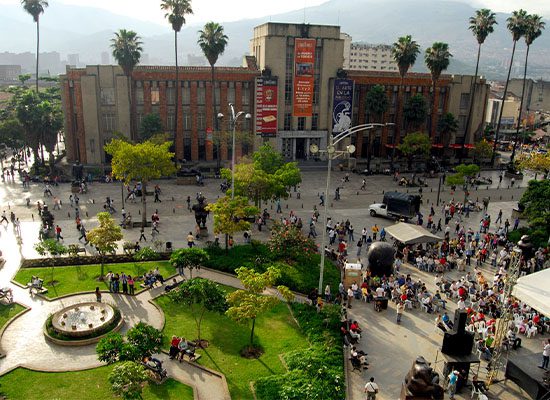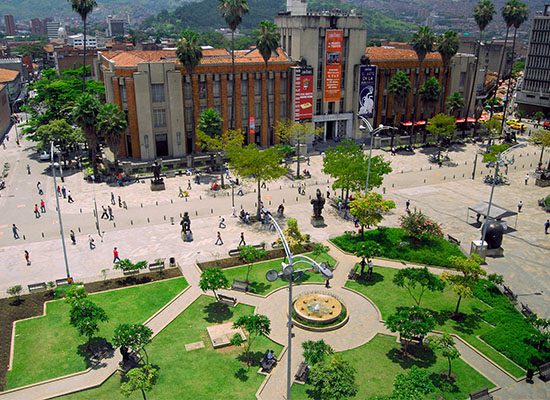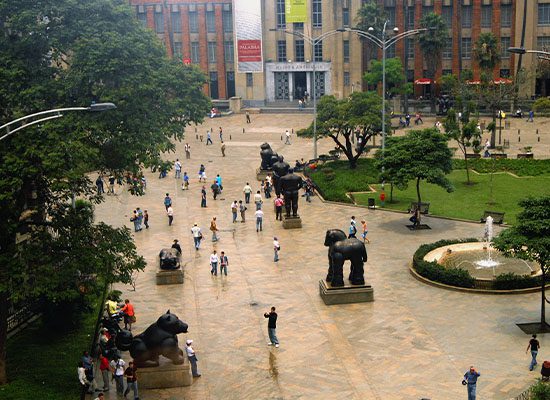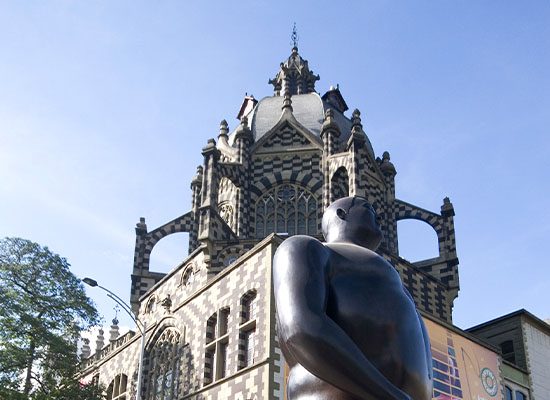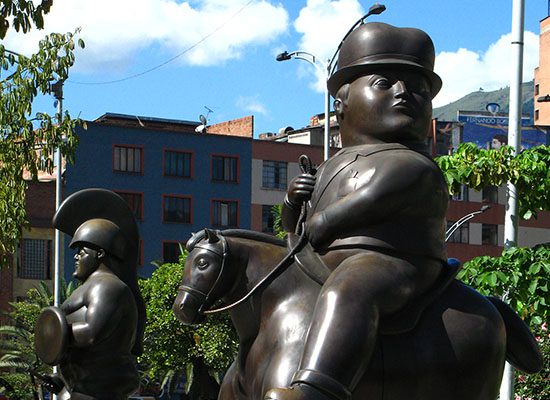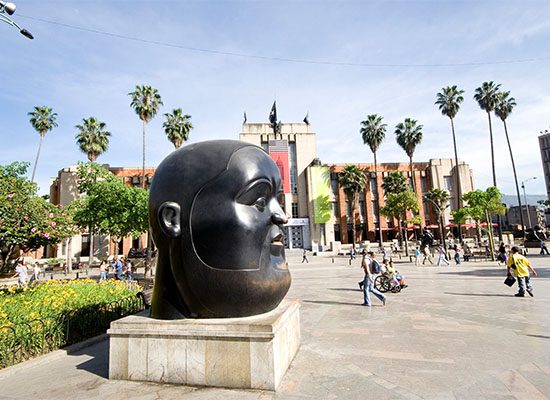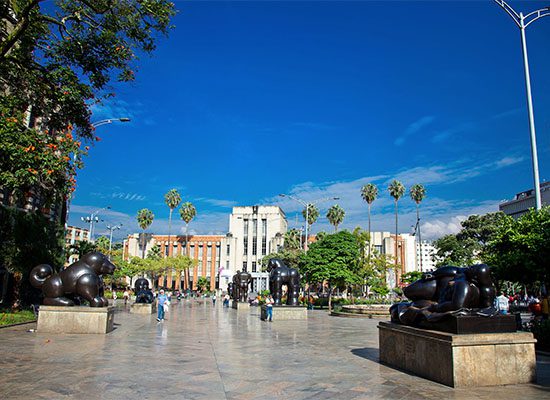UN MUSEO EN UNA PLAZA PÚBLICA
Botero Square of Medellín
Monumental bronze figures gracefully adorn the surroundings of the Museum of Antioquia is one of the most iconic and traditional places in Medellín: Berrío Park, home to the only outdoor place in the world that has 23 sculptures by Maestro Fernando Botero, which were donated in 2002 to the city and would become the perfect excuse to inaugurate the Sculpture Square, or as everyone knows it in Medellín, the Botero Square. There, the bronze sculptures are a living expression of the sensuality that the master Botero wants to express with his work through volume.
Visiting the Museum of Antioquia is also an obligatory step in your visit to Medellín, which in addition to the more than 100 works by the master Botero, also houses 17 permanent exhibition rooms of pre-Hispanic, republican, and contemporary art.
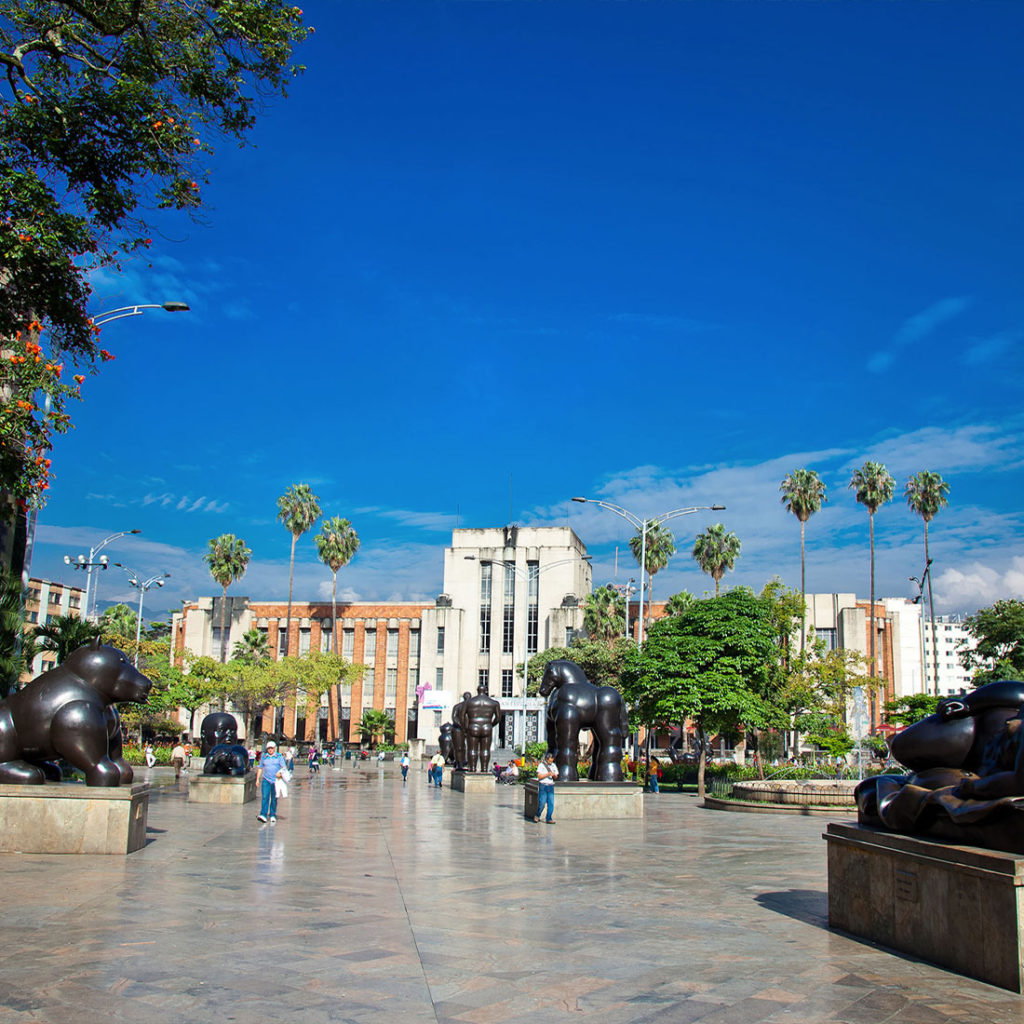
Where is it and how to get to Botero Square?
Botero Square is located in the heart of the city on Avenida Carabobo in Plazuela Nutibara.
Get to Plaza Botero by Metro
Plaza Botero is a few meters from the Parque Berrío station on Line A of the Medellín Metro, in the heart of the city, and is the closest station in a north-south direction to the San Antonio station, one of the busiest in be the station that connects with Line B.
Get off at Parque Berrio station and during the three-minute walk north to Botero Square, take a breath for all the ¨wow¨ that the traditional plaza will bring out.
Arrive by taxi to Botero Square
The distance from the City Center to Plaza Botero depends a lot on where you are, however, most of the trips from there can be done on foot or using some of the stations near the Metro.
From the Laureles neighborhood, the journey is approximately three kilometers and the average cost of the journey for 2020 is 10,000 COP, 2.69 USD. The Barrio El Poblado, one of the most popular among visitors, is approximately 7.5 kilometers away and the average cost of the journey for 2020 is 13,000 COP, 3.50 USD.
Recommendations
- Use sunscreen, the climate of Medellín is usually unpredictable and despite the fact that it is sometimes cloudy, being an outdoor place, the sun is still present. Likewise, it is advisable to wear comfortable clothes and shoes, as well as to carry a sweater or light jacket for the winds when the afternoon falls.
- Visit the Plaza Botero during the day, which will make you feel more confident and secure and your photos will come out better.
- Don’t forget your camera and make sure it has enough memory space. It doesn’t matter if you are not photogenic, all the bronze sculptures in the Botero Square are.
- Stop by the Coffee Laboratory and let yourself be surprised by the aroma and flavor of the coffee from our region.
- Visit the Antioquia Museum Store and don’t forget to bring a souvenir from your time in Medellín; Also, to give a gift, we cannot imagine a present more typical of our culture than an object alluding to Master Botero, the most Colombian of all Colombians.
- Take advantage of the fact that you are in the sector and go to Avenida Carabobo, a pedestrian promenade in the heart of Medellín that is worth visiting to familiarize yourself with the commercial environment of the city and with the music groups, fruit vendors, crafts hats, as well as the shops and department stores that can be found in your path.
Master Fernando Botero Review:
“My way of thinking is reflected in my work, which has great respect for tradition. At the same time, it is a modern and contemporary expression of painting#
Fernando Botero
Fernando Botero is a Colombian painter, draftsman, and sculptor, born in Medellín on April 19, 1932. Botero is one of the most recognized visual artists in Colombia in recent decades. His vast work, currently fully consolidated, his deliberate dislike for contemporary art and his extensive knowledge of the history of classical painting make Botero an exceptional artist in the country and the rest of Latin America. His paintings and drawings are highly personal works that in no way can be confused with the various international figurative positions of recent years. His art is, to some extent, retrograde and provincial. It depends more on the art of the great masters, on popular art, on the pre-Columbian tradition, on the imagery of the colonial period of Latin America than on any figurative “ism”.
Botero stated in 1967: “I am a protest against modern painting and, nevertheless, I use what is hidden behind its back: the ironic game with everything that is absolutely known to all. I paint figurative and realistic, but not in the sense of flat of fidelity to nature. I never give a brushstroke that does not describe something real: a mouth, a hill, a pitcher, a tree. But the one I describe is a reality found by me. It could be formulated this way: I describe in a realistic way an unrealistic reality. “Tracy Atkinson, one of several foreign critics who has referred to his work, has written:” “Botero’s world is people in a broad sense. A repertoire that is generally absurd and a bit pathetic. But the warmth and sympathy of its treatment saves it from its ugliness and makes it instantly unforgettable. The artist’s attitude is so intense and consistent that it reaches into all things.
